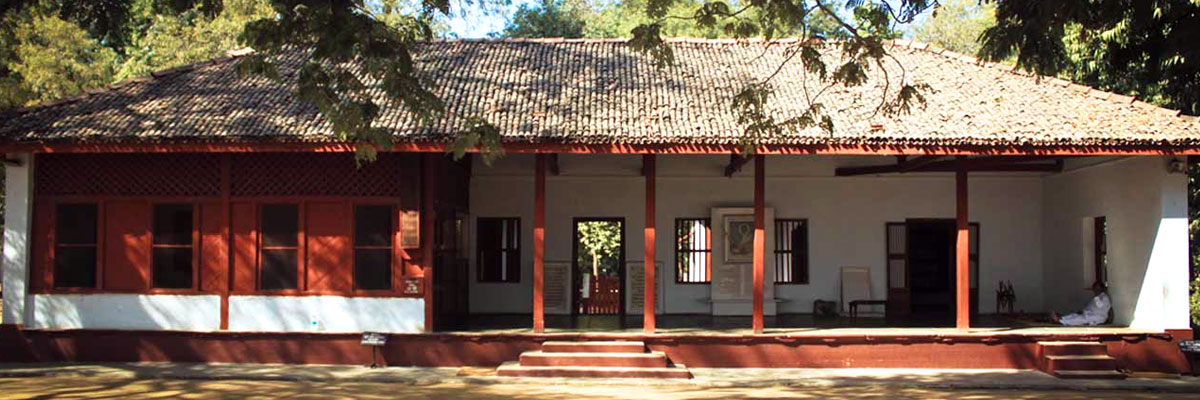
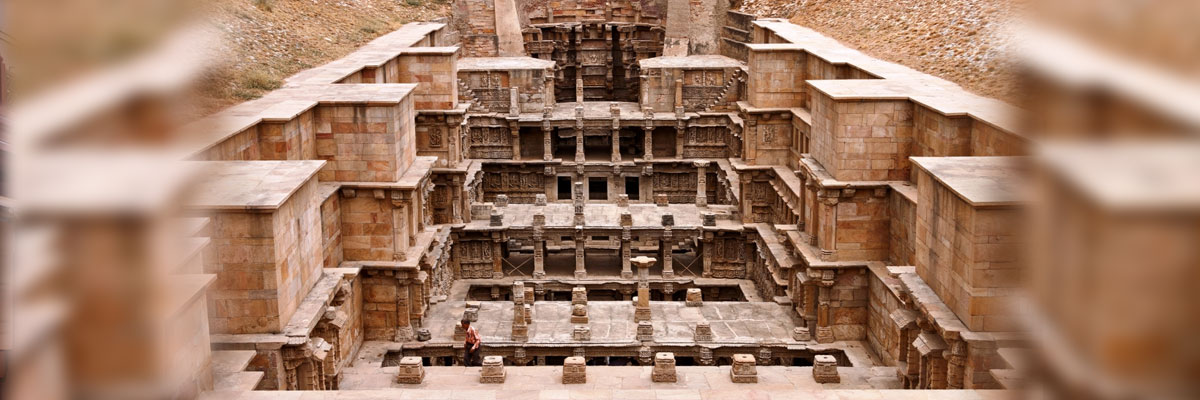
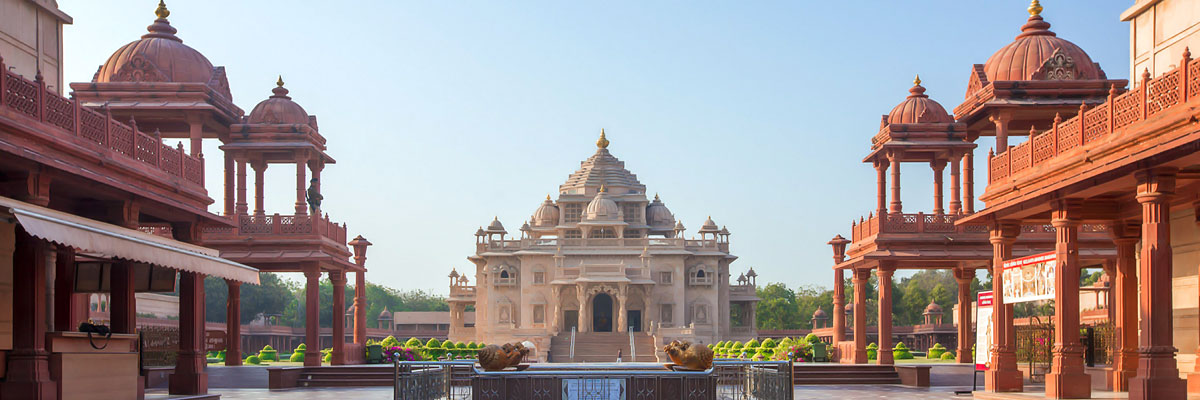
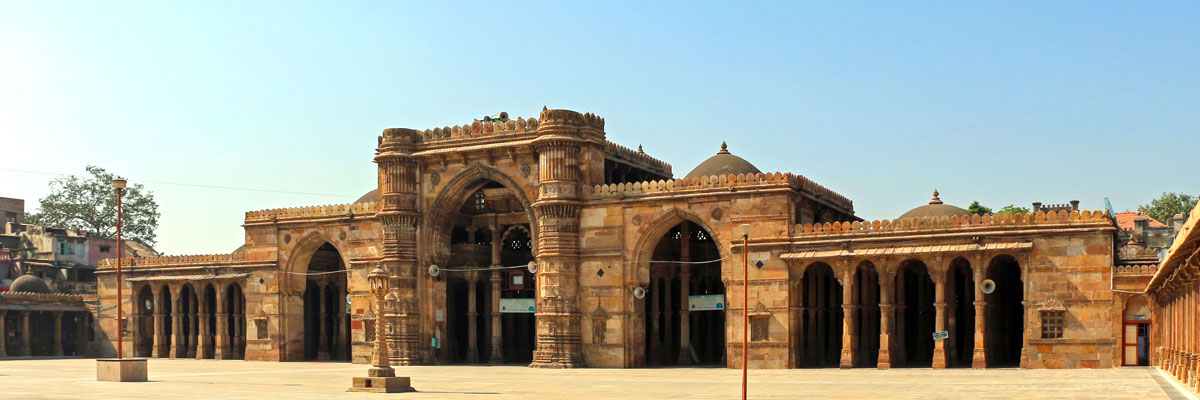
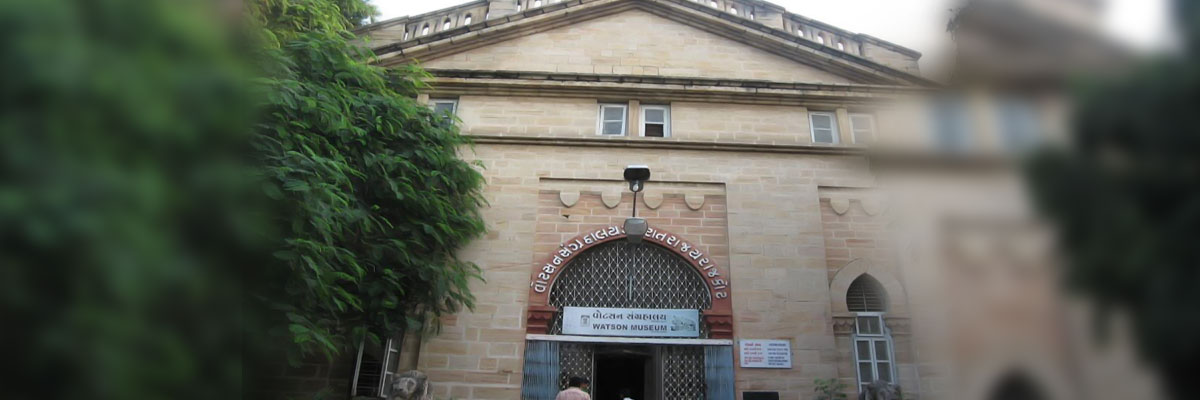


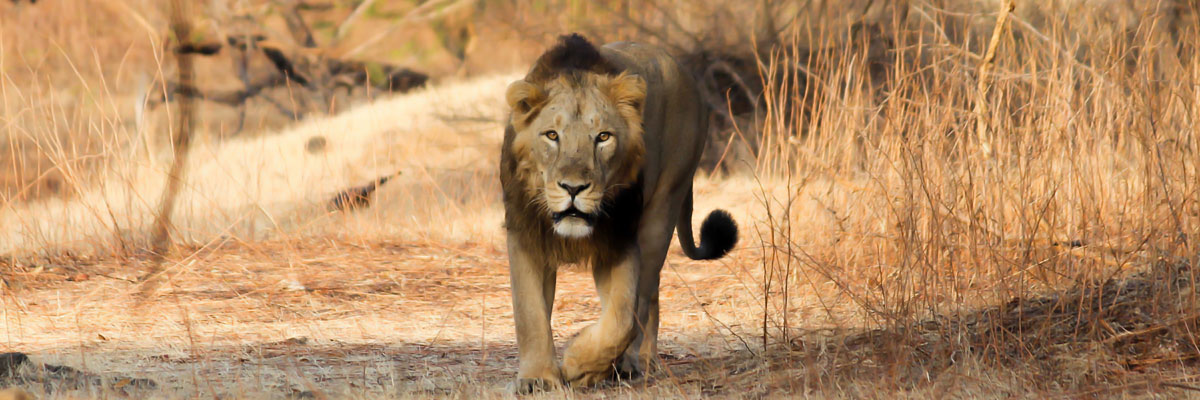
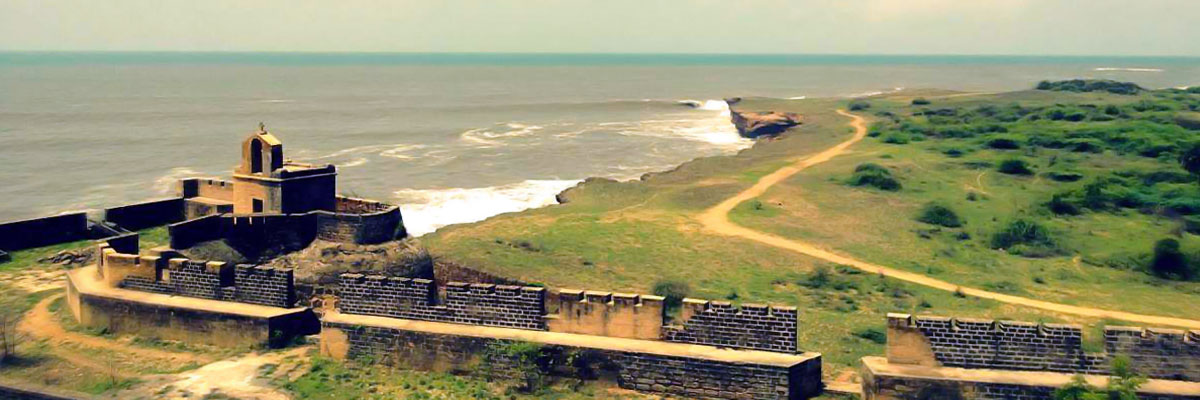
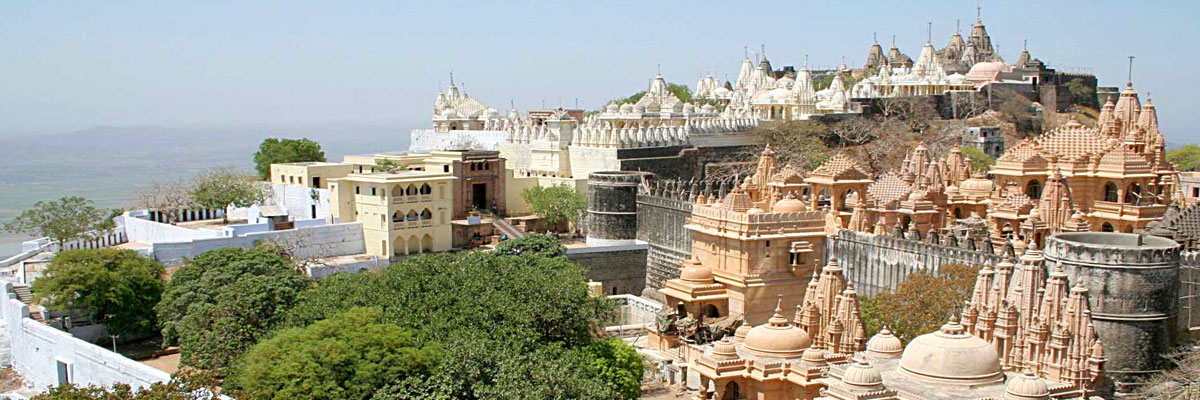












Phone: +91-8880009697
Mail: sales@agnaholidays.com
Today arrive Ahmedabad and proceed for Day trip of Modhera and Patan.
Modhera: The Sun temple of Modhera is one of the finest examples of Indian architecture of its period. Built-in 1026 A.D. the temple is dedicated to the Sun-God, Surya and stands high on a plinth overlooking a deep stone-steeped tank. Every inch of the edifice, both inside and outside is magnificently carved with Gods and Goddesses, birds, beasts and flowers. Sun Temple of Modhera was built by King Bhimdev I (1026-27) and bears some resemblance to the later and far better known, Sun Temple of Konark in the state of Orissa, which it predates by some 200 years. Like that temple, it was designed so that the dawn sun shone on the image of Surya, the Sun God, at the time of the equinoxes. The main hall and shrine are reached through a pillared porch and the temple exterior is intricately and delicately carved. As with the temple of Somnath, this fine temple was ruined by Muhammad of Ghazni.
Patan: Home of the famous Patola silk saris, Patan is a beautiful old town with Jain temples and carved wooden houses. Rani ki vav (step well) is an excellent example of the subterranean architecture of Gujarat. The exquisitely carved side walls, pillars, beams, series of steps & platforms lead to the elaborately carved water well. Every surface is adorned with finely chiseled sculptures of maidens & Hindu deities, religious motifs & geometrical patterns. Rani ki Vav represents the finest of the Indian sculptures and architecture.
Later visit Akshardham Temple.
Akshardham: Lord Swaminarayan, born in Chapaya in Uttar Pradesh, took a seven-year pilgrimage in Gujarat to preach his religion. He built six temples, the first being at Kalupur in Ahmedabad. Akshardham, the Swaminarayan temple of Gandhinagar, is a modern complex, built in traditional Indian architectural style from 6,000 metric tons of pink Rajasthan sandstone, carved by expert artisans from Bansipahadpur. The temple is set in a multi-acre garden called Sahajanand Van, with intricate sculptures of Hindu Gods. There is a gold leaf copper sculpture of Lord Swaminarayan that faces similar sculptures of Gunatinand Swami. The interiors have beautiful columns in rosewood that rise up to a high dome. Akshardham remains closed on Mondays.
The old city of Ahmedabad is dotted with labyrinthine bylanes called 'polls'. The exquisite carved wooden mansions and Havelis are in no manner less than their stone counterparts in Rajasthan. The city also offers a rich architectural legacy that blends Hindu and Muslim schools of architecture, stone, and brick with arches, domes, and vaults, carved pillars, trefoil designs besides the modern buildings designed by the famous French architect, Le Corbusier, and Louis Kahn.
Back to hotel and day is free for rest.
The day is free for rest.
Overnight at the hotel.

After breakfast, drive towards Baroda for a day trip.
Modern Baroda is a great and fitting memorial to its late ruler, Sayaji Rao Gaekwad III (1875-1939 AD). It was the dream of this able administrator to make Baroda an educational, industrial and commercial centre and he ensured that his dream would come true. Baroda is situated on the banks of the river Vishwamitri (whose name is derived from the great saint Rishi Vishwamitra). The city was once called Chandravati, after its ruler Raja Chandan, then Viravati, the abode of the brave, and then Vadpatra because of the abundance of banyan trees on the banks of the Vishwamitri. From Vadpatra it derived its present name Baroda or Vadodara.
Baroda has a rich historical background. The ardent historian can trace Baroda’s history over 2000 years and more. However, the recent threads can be picked up when the Moghul rule over the city came to an end in 1732, when Pilaji brought the Maratha activities in Southern Gujarat to a head and captured it. Except for a short break, Baroda continued to be in the hands of the Gaekwads from 1734 to 1949.
The greatest period in the Maratha rule of Baroda started with the accession of Maharaja Sayajirao III in 1875. It was an era of great progress and constructive achievements in all fields.
Maharaja Sayajirao was one of the foremost administrators and reformers of his times. He initiated a series of bold socio-economic reforms. It was he who visualized a general scheme of development in all branches of knowledge at different stages, with the Maharaja Sayajirao University of Baroda at the apex. Modern Baroda owes its beauty, its educational institutions and its masterpieces of architecture to the insight and vision of this great ruler. There is a saying that nothing grows under the banyan tree, but this is not true of Baroda. Having witnessed the rise and fall of the empires and kingdoms of the Hindus, Pathans, Moghuls, and Marathas, it now occupies a unique position on the educational, cultural and industrial map of India. Yet, it has been fortunate enough to retain the beauty of its rich and varied past. And it is one of the few cities in India which is still influenced by the lost might of its ruling dynasties.
Later proceed towards Ahmedabad for city tour of Ahmedabad.
Gandhi Ashram: On a quiet peaceful stretch of the Sabarmati River, Mahatma Gandhi set up a simple retreat in 1915. This was his Satyagrah Ashram and for many years it was the nerve centre of India’s freedom movement. It was from here, in 1930, that Mahatma began his famous Dandi March to the sea to protest against the Salt Tax imposed by the British. Hridaya Kunj, the simple cottage where he lived, is now a national monument and preserved as it was during the Mahatma’s life-time.
Sidi Sayed Mosque: One part of the wall in the old citadel of the mosque built by Ahmed Shah’s slave, Sidi Sayed, is celebrated the world over for its exquisite stone window tracery – a superb & peerless example of delicate carving that transforms stone into filigree.
Jumma Masjid: The Friday mosque was built by the city’s founder, Sultan Ahmed Shah, in 1423. Built of yellow sandstone in an architectural style that combines the best of Muslim & Hindu traditions. It stands on 260 pillars that support 15 domes at varying elevations.
Teen Darwaja: The triple-arched gateway was built by Sultan Ahmed Shah to serve as the royal entrance to the Maidan Shahi or the Royal Square. It is in an imposing monument of perfect proportions & highly ornate buttresses.
Hutheesingh Jain Temple: Built outside the Delhi Gate in 1850 by a rich Jain merchant, the Hutheesingh Temple is the best known of Ahmedabad’s many ornate Jain temples.
Evening Market at Law Garden displays beautiful textile handicrafts of Gujarat.
Overnight at hotel

After breakfast drive to Rajkot; arrive Rajkot and transfer to your hotel.
Rajkot is a very pleasant provincial town. Mahatma Gandhi spent a few years of his life in this town. His father was the Dewan (Chief Minister) of Rajkot, once a small princely State.
Later visit Kaba Gandhi No Delo / Mahatma Gandhi House: The Kaba Gandhi No Delo is the house of the Mahatma Gandhi where he lived from the age of six. The Mahatma Gandhi House has a good collection of things related to Mahatma Gandhi's life. The Mahatma's Passion for the handloom is preserved in the form of a small weaving school.
Watson Museum: The Watson Museum and Library commemorates the work of Colonel John Watson, a political agent from 1886 to 1889. It is a jumbled attic of the collection with the 3rd-century inscriptions and a delicate ivory work overseen by a marble statue of Queen Victoria. The Watson Museum has a collection of precious objects of the colonial period, human history and culture, and History of Rajkot.
Explore Rajkot which is famous for its Imitation Jewellery market and silk embroidery.
Overnight at hotel

After breakfast drive to Dwarka; Arrive Dwarka and transfer to your hotel.
The small coastal town of Dwarka is one of the four most holy Hindu pilgrimage sites in India. It is here that Krishna founded his capital after leaving Mathura. Excavations have revealed 5 earlier cities at the site, all submerged. The present town dates largely to the 19th century and attracts thousands of pilgrims to celebrate the Holi, Diwali and Janmashthami festivals. The multi pillared Sabha Mandapa leads to a 60 pillared sanctum sanctorum that dates back 2500 years according to the scriptures.
Overnight at hotel

After breakfast visit Bet Dwarka & Nageshwar temple. Bet Dwarka: Bet is situated at 30kms from Dwarka and is surrounded by sea from all sides. One can reach Bet from Dwarka through Okha by road. On reaching Okha port jetty, one can reach Bet through a little sea journey in a launch or in a small boat.
Nageshwar Temple or Nagnath Temple is located on the route between Gomati Dwarka and the Bait Dwarka Island on the coast of Saurashtra in Gujarat. The Jyotirlinga enshrined in the Temple of Nagnath is known as Nageshwar Mahadev and attracts thousands of pilgrims all-round the year.
This powerful Jyotirlinga symbolizes protection from all poisons. It is said that those who pray to the Nageshwar Lingaa become free of poison. The Rudra Samhita shloka refers to Nageshwar with the phrase 'Daarukaavane Naagesham'
The Rukmini temple, dating from 12 to 13 Century, was built in honor of Rani Rukmani, princess of Vidharba, which was to be married to Sishupala but fled with Lord Krishna. This small temple, 1.5 km north of the city, is an architectural masterpiece. The temple walls are decorated with beautiful paintings and sculptures.
Gopi Talav: This is the place where Lord Krishna used to play with his Gopikas. There is a small pond where it is said that Lord Krishna used to play with the Gopika Strees (Gopika Women).
Overnight at hotel

Early morning visits the Dwarkadhish Temple and witness the Aarti.
After breakfast drive to Somnath VIA PORBANDAR VISIT
arrive Somnath and transfer to your hotel.
Somnath is located near Veraval. Somnath consists of a few streets leading away from its phoenix-like temple. The rugged sea below gives it a lonely, wistful charm. The pilgrim trade is constant, but merchants are relaxed, perhaps in deference to the shadows cast by the awe-inspiring temple. Somnath is mainly known for the legendary shore temple of Somnath, which is dedicated to Lord Shiva.
Visit Somnath Temple. This temple is one of the twelve most sacred shrines dedicated to Lord Shiva and a Jyotirlinga. According to the legend, Somnath temple was built originally in gold by Somraj, the moon god. This Somnath temple was rebuilt and destroyed seven times till 1706 A.D when it was destroyed by the Mughal emperor Aurangzeb. After that, it was finally rebuilt in 1950 with the support of Sardar Vallabh Bhai Patel. Somnath Temple is visited by followers of both Shiva and Vishnu.
The most important temple and main highlight in Somnath is the Kailash temple with its imposing architecture, a 50-meter high tower, intricate carvings and a number of holy idols and images. After performing the evening Aarti and after witnessing the Sound & Light Show then visit the beach of Somnath which is very beautiful & a captivating sight to behold. The fresh blue waters, humming waves, and the cool sands give you a feeling of having landed in a paradise. The beach has pleasant sands, great sea views, camel and pony rides, coconut stalls and snack places.
Later visit Rudreshvara Temple – Rudreshvara Temple is a ruined temple located near the Somnath temple. Bhalka Tirth – Bhalka Tirth is situated halfway between the Veraval and Somnath. At this place, Lord Krishna was mistaken for a deer and wounded by an arrow.
Overnight at hotel

After breakfast drive to Sasangir; arrive Sasangir and transfer to your hotel.
Sasan Gir, popularly known as Gir, the most famous loin sanctuary in India. And the one place in the subcontinent where Asiatic Lions can be found in the wild. Sasan Gir on the south-western border of Saurashtra peninsula in Gujarat and is home to nearly 400 Asiatic loins. The Sanctuary was created in 1913 to provide protection to the largest surviving groups of the Asiatic lions and was given the status of the sanctuary in 1965; the numbers of loins has been steadily on the rise since 1980. This is the only place in the world outside the African continent where the loin can be seen in its natural habitat. The loin safaris are popular among tourist & jeep are freely available for touring the forest. Though the most famous inhabitants of the park are Asiatic lions. It is also providing natural habitat to a lot of other species like chital, Chinkara (Gazelle) four-horned antelope. Leopard, Nilgai, spotted deer, wild boar, wild ass, monkeys, parrots and peacocks, many other birds, etc.
Overnight at hotel

After breakfast, proceed for Safari in Gir Park.
Back to hotel and drive to Diu; arrive Diu and transfer to your hotel.
Diu is a tiny island in the Arabian Sea which is situated near the port of Veraval in Gujarat and is separated from the southern extremity of the Saurashtra peninsula by a narrow channel running through the swamp. Diu is a sensuous blend of sun, sand and deep blue sea.
Later visit Nagoa beach: The beach is exceptionally beautiful & quiet and is in the shape of a horse-shoe (semi-circular).
Overnight at hotel

St.Paul's church: The Church adorned with curiously treated volutes & shell-like motifs and the magnificent wood carving is considered to be the most elaborate of all the Portuguese churches in India.
St.Thomas Church Museum: A huge edifice in gothic architecture was built in 1598 A.D. A part of it has been converted into a museum, an archaeological treasure house.
Diu Fort: This majestic structure stands on the coast of Diu sentinel.
Nagoa beach: The Nagoa beach is exceptionally beautiful & secluded. The horse-shoe (semicircular) shaped, palm-fringed beach is twenty minutes invigorating drive from Diu.
Overnight at hotel

After breakfast drive to Bhavnagar en route visiting Palitana.
Palitana: Palitana lies at the foot of the Shetrunjaya hill, with the Shetrunjaya River flowing to its south. The sacred hill rises in a crescendo of magnificent temples – 863 in all – that soar in marble splendor to the top of the hill. The temples were built over an impressive span of 900 years with each generation of pilgrims making its contribution to the shrines of Shetrunjaya. The 600-meter climb to Shetrunjaya is usually made on foot. Dolis or lift-chairs are also available for the ascent.
Later arrive Bhavnagar and transfer to your hotel.
Bhavnagar was founded by Bhavsinhji Gohil in 1723 AD near the Gulf of Khambhat, on a carefully chosen strategic location having the potential of maritime trade. Till independence, Bhavnagar State was ruled by the Gohil Rajput clan.
Later visit Gaurishanker Lake: A beautiful picnic spot near the lake. There is also a well laid out park.
Takhteshwar Temple: Situated on a hill, the site provides a panoramic view.
Lock Gate: The first of its kind in Gujarat. The sea-water here is impounded by the lock gates to keep ships afloat during low tide, which could be seen with special permission.
Also, visit Sarangpur Hanuman Temple.
Overnight at hotel

Ater breakfast drive to Ahmedabad en-route visiting Lothal.
Lothal: A perfect place to get an insight of the Indus Valley civilization. The most dominating site at Lothal is the massive dockyard spanning an area of 37 meters by 22 meters perhaps the greatest work of Maritime Architecture. Lothal was also famous for its arterial streets, microbes of gold, ivory and coppersmiths' workshops, potteries and underground sanitary drainage. It is located at a distance of 78 km from Ahmedabad. (Closed on Fridays).
Later arrive Ahmedabad and transfer Airport for departure drop
Overnight at hotel